I built my own PC and it was super easy - here's how to do it
After a few months, I decided I wanted a different look for my PC. So I sold off some parts I wasn't going to use anymore, including the case, RAM, motherboard, CPU cooler, and fans, and bought replacements that would fit my new criteria." Here's where my PC stands now:

All in all, it looks pretty sweet!
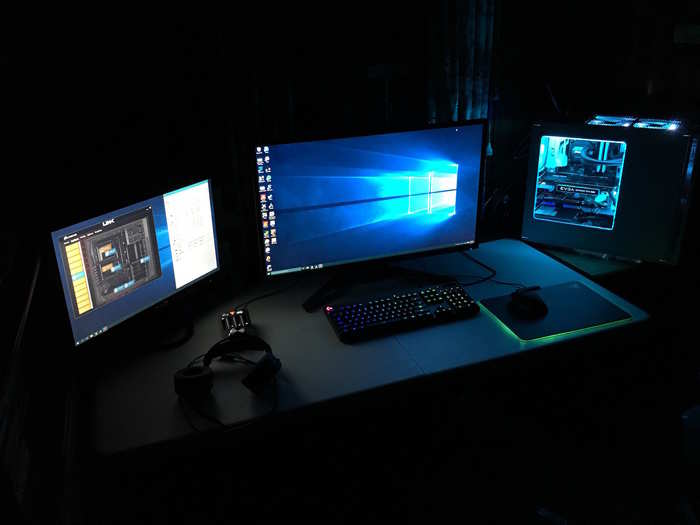
I also went on to add ridiculous LED lights because why not.
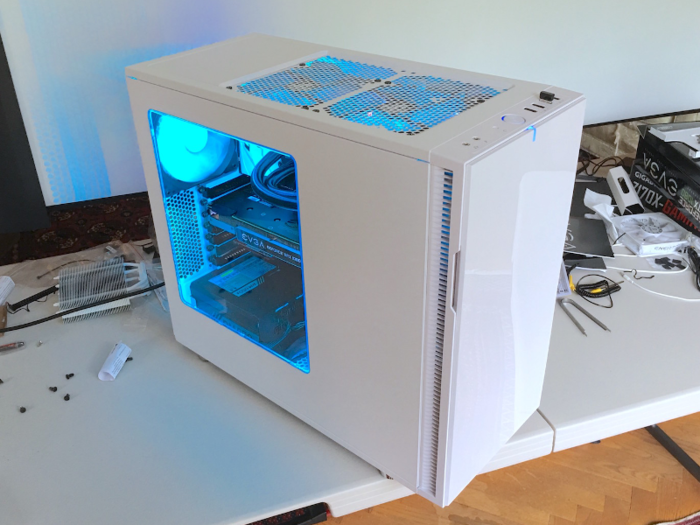
Keep in mind that this computer is excessively powerful for the average gamer, and it's pretty expensive, too. Also, since I built this about a year ago, there are newer version of certain parts, like the CPU, motherboard, and graphics card.
Case: Fractal Design Define R5
Motherboard: Gigabyte G1 Gaming GA-Z170X 7
CPU: Intel Core i7 6700K
CPU fan: Enermax ETS-T40F-W
CPU water cooler: Corsair H115i Hydro Series
Thermal compound: Arctic Silver 5
RAM: Corsair Vengeance LPX DDR 4 32GB
Graphics cars: EVGA GeForce GTC 1080 SC
Power supply unit: Corsair RM650 X
WiFi card: Asus PCE-AC56 802.11ac Dual-band Wireless AC3100 PCI-E Adapter.
LED lighting: DeepCool RGB 330
All those parts came to a total of around $2,000. I must add that I had little regard for money on the day I decided to buy these parts, which is incredibly silly. At the same time, this computer will last me a long, long time, and I won't need to buy parts for several years to come. And as I mentioned earlier, I went with quality over value for this particular build.
IT IS ALIVE! But I wasn't done with it just yet...
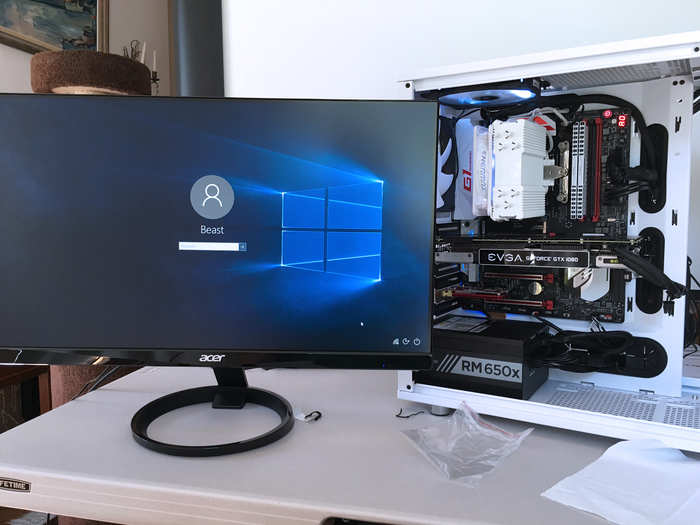
I just needed to connect the odd cable here and there for things like the case's power buttons, power LEDs, and audio jack at the front, and I was basically done. Time to see if it all works!
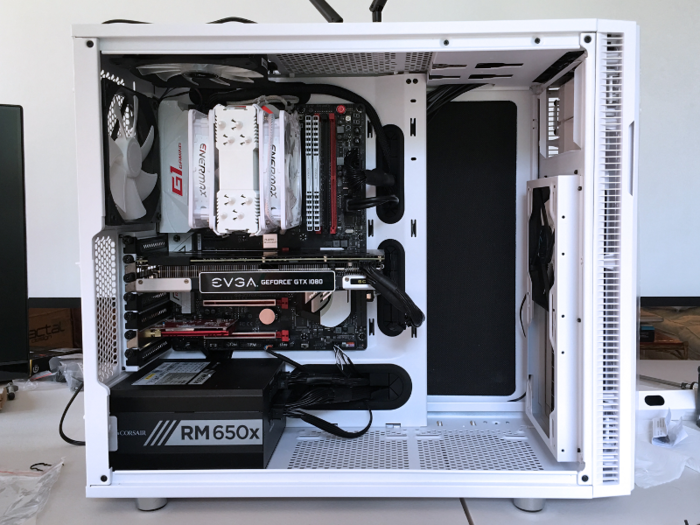
Then it was time to install the SSD for storage. Thankfully, this case has SSD mounts in the cabling section. This is before I added the power and data cable to the SSD.
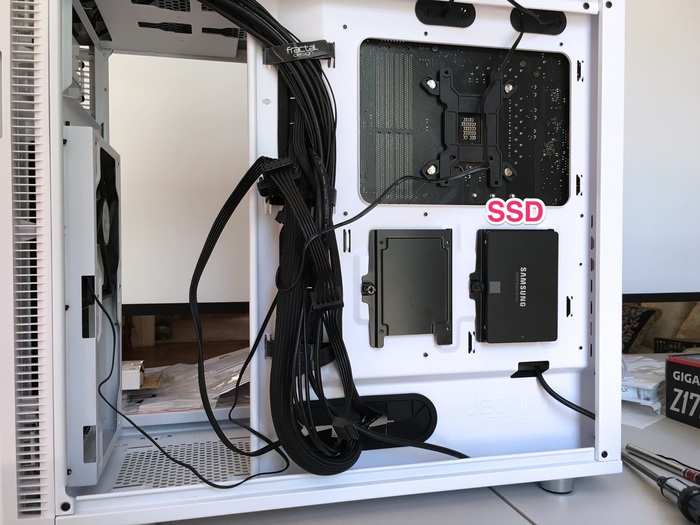
For the SSD, I went with the Samsung 850 EVO 500GB. You can buy it here.
The WiFi card fits underneath the graphics card.
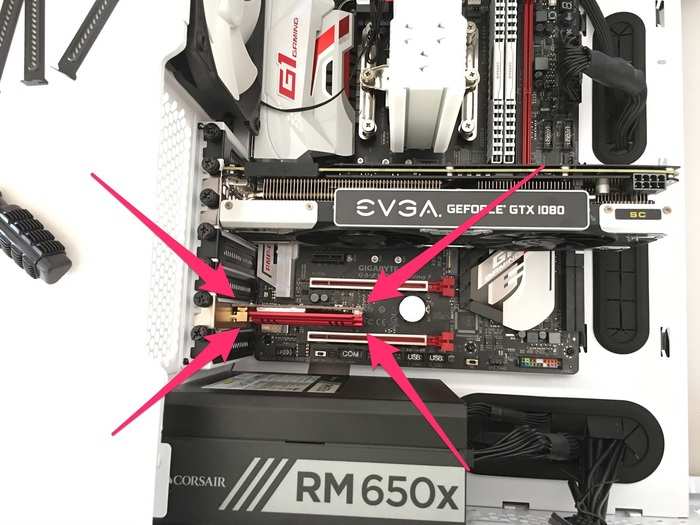
None of this would be useful if I didn't have internet, and since I don't have Ethernet in my house, I had to get a WiFi adapter card.
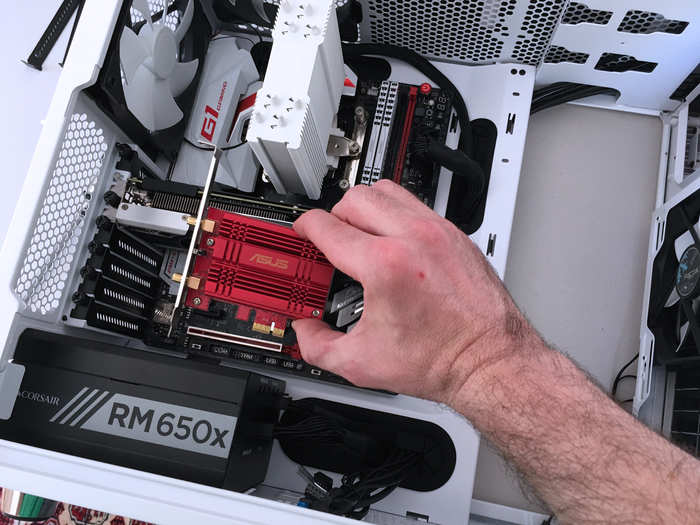
Surprisingly, few motherboards come with built-in WiFi. At the same time, built-in WiFi probably wouldn't be very good anyway, so you're always better off getting a dedicated WiFi card.
This WiFi card it the Asus PCE-AC56 802.11ac Dual-band Wireless AC1300 PCI-E Adapter. Such a memorable model name. You can buy it here.
I fit the graphics card into its designated slot, right underneath the CPU cooler.
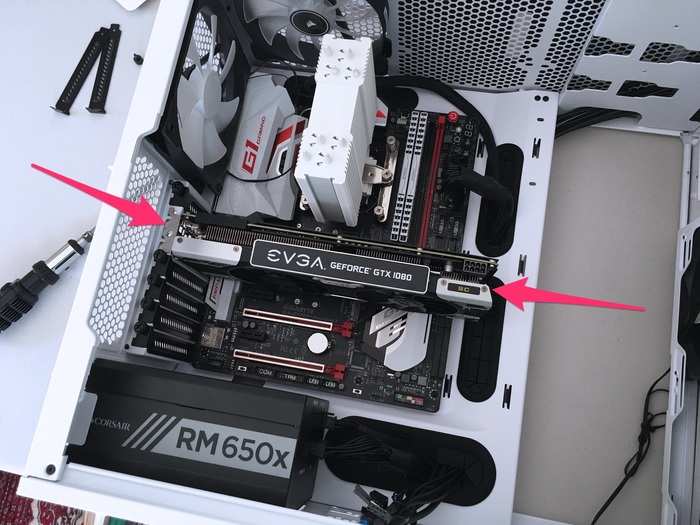
Now it's time to install the graphics card. This is the most important part of a powerful gaming PC, and it's the most expensive.
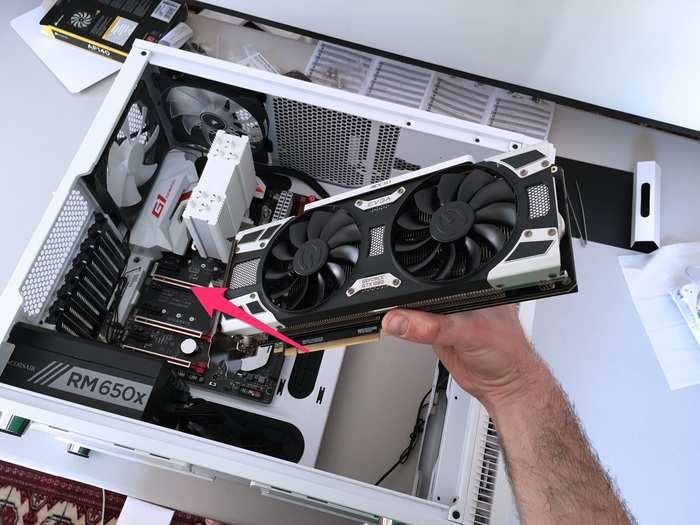
The graphics card is the muscle of your machine, as it provides the processing power for super-smooth gameplay and super-high resolutions. For this build, I went with the EVGA GeForce GTX 1080 SC, which you can buy here.
It's looking pretty good so far!
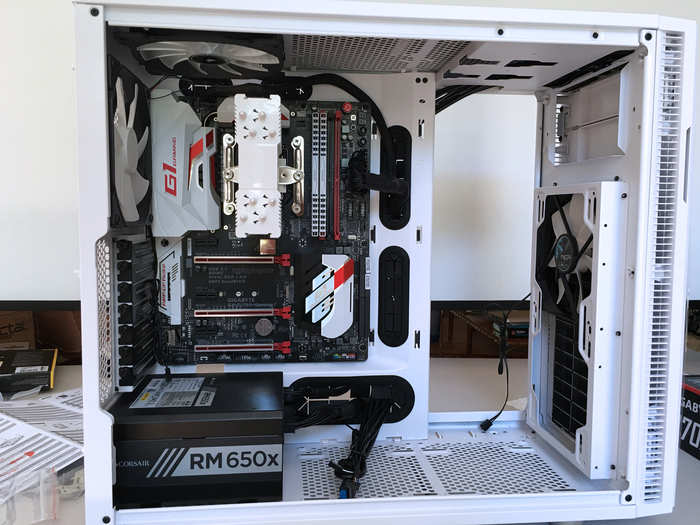
Then, I hooked up the power cables into their respective slots on the motherboard and the power supply itself.
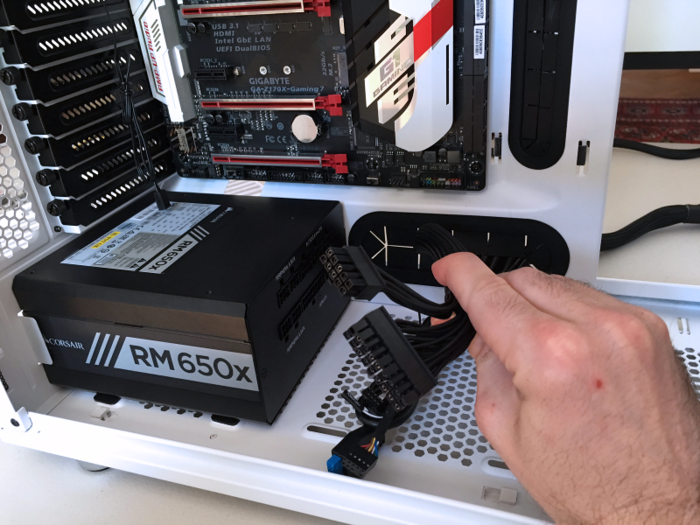
This power supply unit is the Corsair RM650X. You can buy it here.
If the power supply unit was compared to a body part, it would be the heart, as it's pumping power through to all the parts in the computer.
The CPU cooler is in and ready to keep things nice, chilly, and operational.
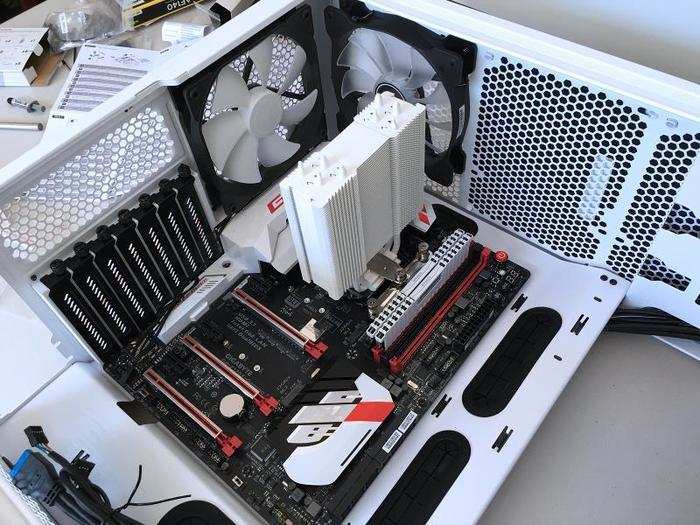
Before installing the cooler, I needed to add a smidgen of what's called thermal compound, which helps transfer the CPU's heat to the cooler's radiator. I just dabbed a little bit of it right on top of the CPU.
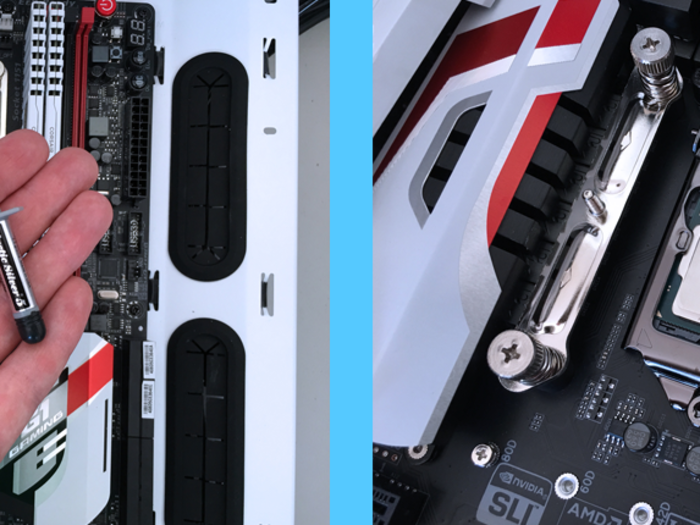
This thermal compound is popular among PC builders, and it's called Arctic Silver 5. You can buy it here.
Next up, installing the CPU cooler, which, well, cools the CPU.
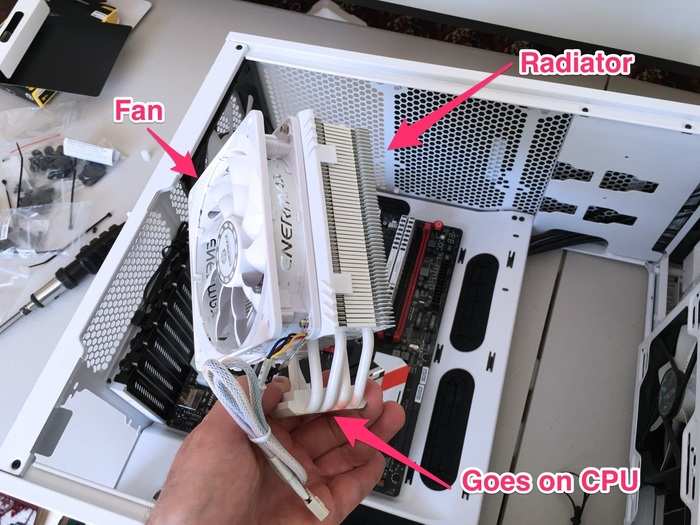
If there's one thing that CPUs hate, it's heat, so it's a good idea to get a good CPU cooler. I ended up choosing the Enermax ETS-T40F-W — you can buy it here.
This particular cooler is a radiator that sits on top of the CPU and sucks up all the heat into those metal fins in the radiator. Fans on either side of the radiator blow cool air through the fins so it can keep absorbing the heat from the CPU.
It comes pre-assembled the way it's shown above, but you can add another fan on the right side if you want.
And now I can install the motherboard using screws and the included standoffs to attach it to the case.

All motherboards will come with instructions on how to install them into cases, and it's simple.
You just need to make sure that you're getting the right size motherboard for your case. This motherboard is an ATX size, which fits in mid-size tower cases. You can fit other sizes in mid-size tower cases, like micro ATX and mini ATX, which are pretty much the only motherboard sizes you really need.
The I/O shield goes in pretty easily, but it can be finicky.
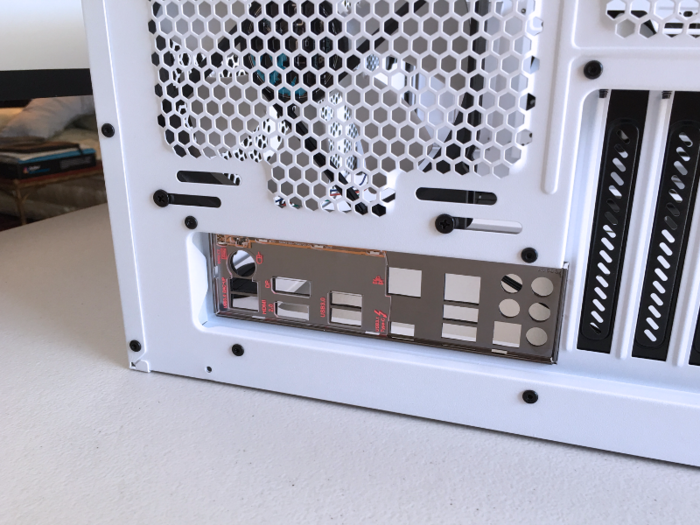
It's time to install the motherboard's "I/O shield." It's important to do this before installing the motherboard because you can't add the shield afterwards.
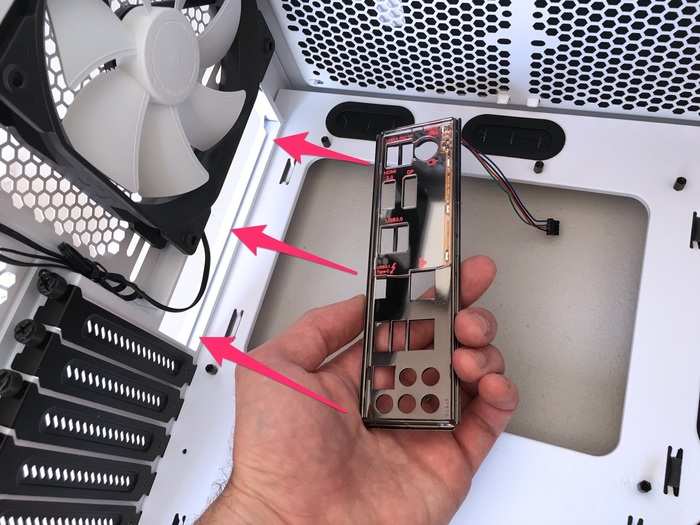
Once the feeding process was complete, I took out the "drive cages" that usually house hard drives and CD drives on the right of the case.
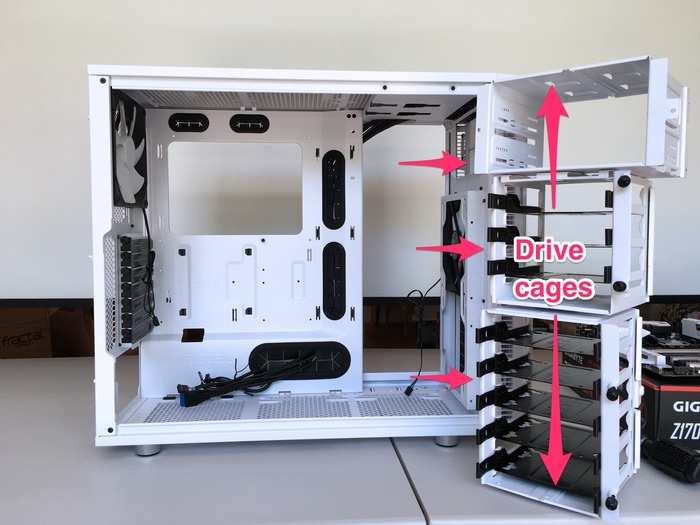
One of the reasons I picked the Fractal Define R5 case is because it lets you remove all the drive cages.
Since I'll only be using one SSD for storage, I don't need any of these drive cages, which take up space and block airflow from the fans once the computer is up and running.
Before the build, it's important to feed your body and soul for the adventure ahead.
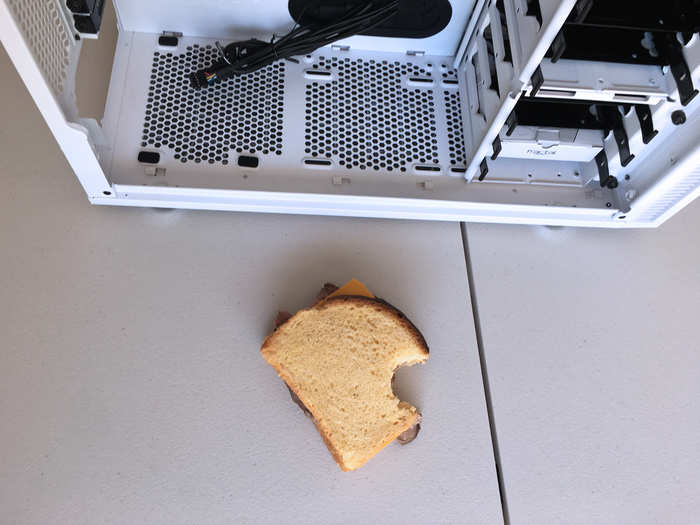
This is a roast beef and cheddar sandwich with olive oil mayo and potato bread. Untoasted. I can't guarantee any PC build will work if you deviate from these sandwich specifications.
The cables and wires that connect parts to other parts all go on the other side of the case, which has a dedicated cabling section.
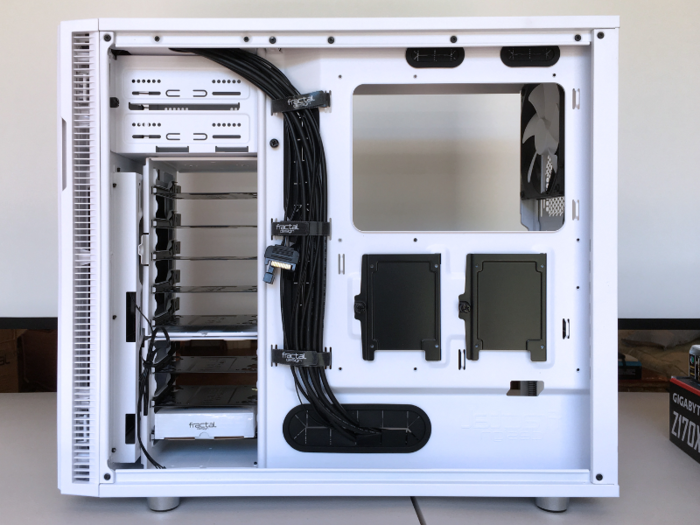
Here's the case after removing the side panel. This is where all the parts go.
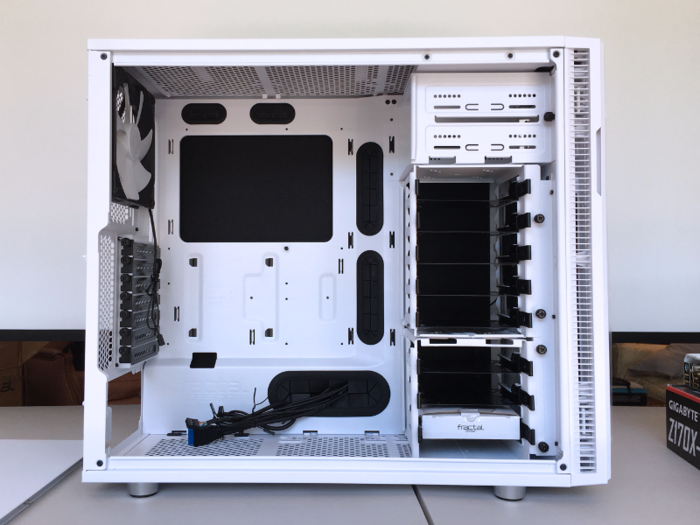
Now it's time to whip out the case and peel back that plastic film over the window panel. So satisfying.
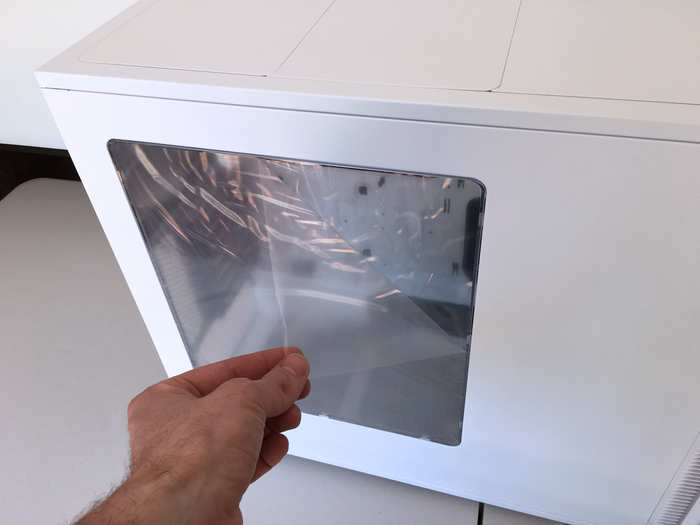
This case is called the Fractal Design Define R5 — you can buy it here. I opted for a windowed side-panel because I had never used one before, and I wanted to show off the powerful-yet-pricey parts, mostly to myself.
I also went with a white color theme to be a little different, as so many PCs are drab and black.
Now it's time to install the RAM into its designated slots.
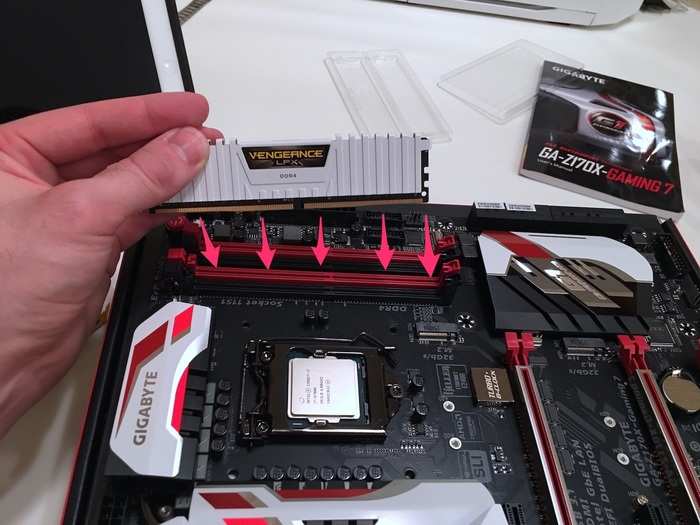
I got two sticks of the latest DDR4 RAM, with 16GB of RAM each for a total of 32GB of RAM, which is totally unnecessary and excessive. The brand is Corsair and the model name is Vengeance LPX. You can buy it here.
The RAM is a computer's short term memory where it stores all the apps and files you've opened since turning on the computer, which lets you re-open those apps and files quickly. It's as easy as plugging in a USB mouse into your computer.
The CPU is installed and ready to go after I close the clasp that holds it down.
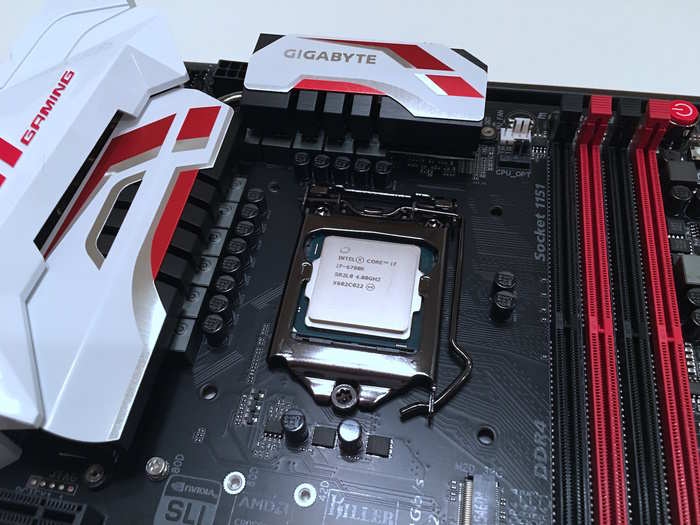
The clasp is extremely tight on the CPU. I thought I was doing it wrong and it was going to break the chip, but everything was lined up and there was no reason for anything to go wrong.
I started by installing the CPU (the square thing I'm holding) into the motherboard. It's probably the easiest part of the whole build.
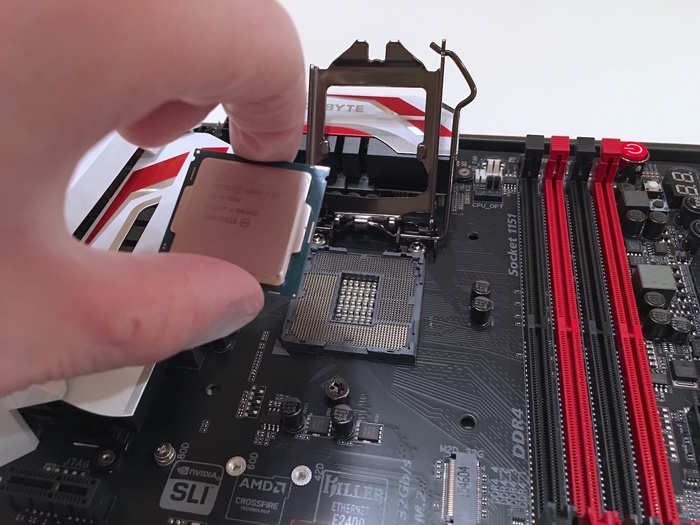
The CPU is the brain of a computer, as it's coordinating pretty much everything that's going on in the computer.
I bought the Intel Core i7 6700K processor — you can buy it here. It's one of the most powerful CPUs you can get at the moment and it's total overkill for today's gaming needs, as you can run games pretty smoothly with older and less powerful CPUs.
However, I'm planning to make this computer last a long, long time, so I wanted to future-proof it as much as I could with a powerful CPU that'll exceed specifications for several years.
This is the motherboard, which acts as the host to most of the parts.
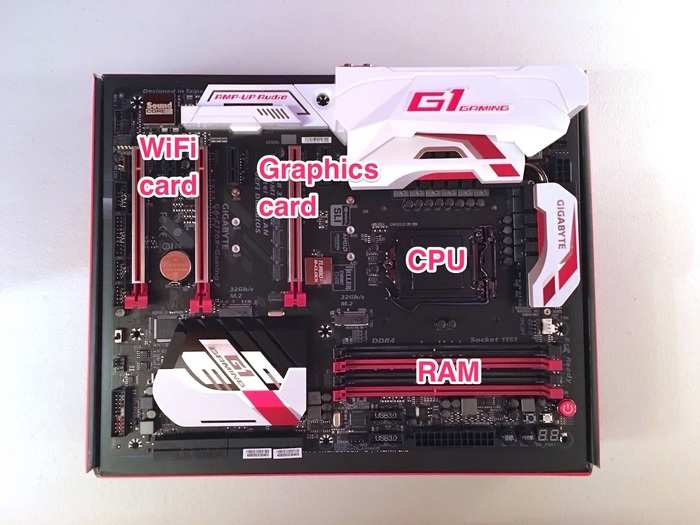
This is the Gigabyte G1 Gaming GA-Z170X 7 motherboard — you can buy it here. It's specifically designed for gaming, as it has some extra features that gamers will appreciate, like better internet performance. Gaming motherboards are also often built at a higher quality than regular motherboards, which means they're often more expensive, too.
To be honest, gaming motherboards are overkill for most gamers, including myself. However, I chose a gaming motherboard because I went for quality over value with this build.
See that big white case on the left? I'm going to put all these labeled parts into that case to make a super-powerful computer that will play video games in the 1440p resolution.
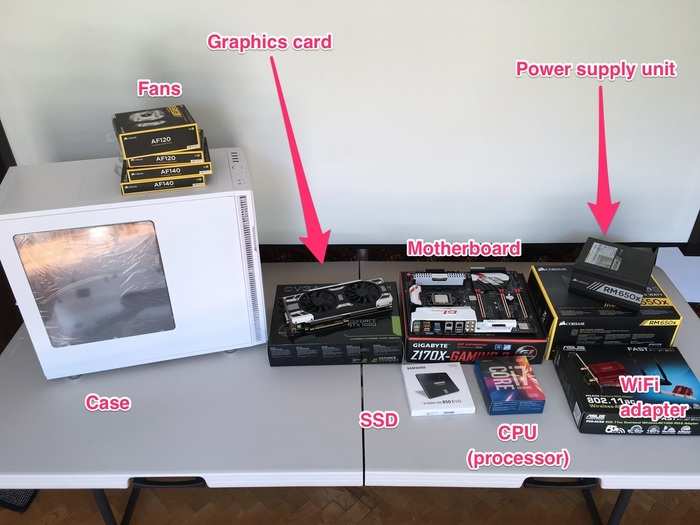
In case you want to build a PC exactly like mine, I'll list each component as they come up. There's also a full list of everything I used at the very bottom of this story.
Popular Right Now
Popular Keywords
- India’s wearables market decline
- Vivo V40 Pro vs OnePlus 12R
- Nothing Phone (2a) Plus vs OnePlus Nord 4
- Upcoming smartphones launching in August
- Nothing Phone (2a) review
- Current Location in Google
- Hide Whatsapp Messages
- Phone is hacked or not
- Whatsapp Deleted Messages
- Download photos from Whatsapp
- Instagram Messages
- How to lock facebook profile
- Android 14
- Unfollowed on Instagram
Advertisement